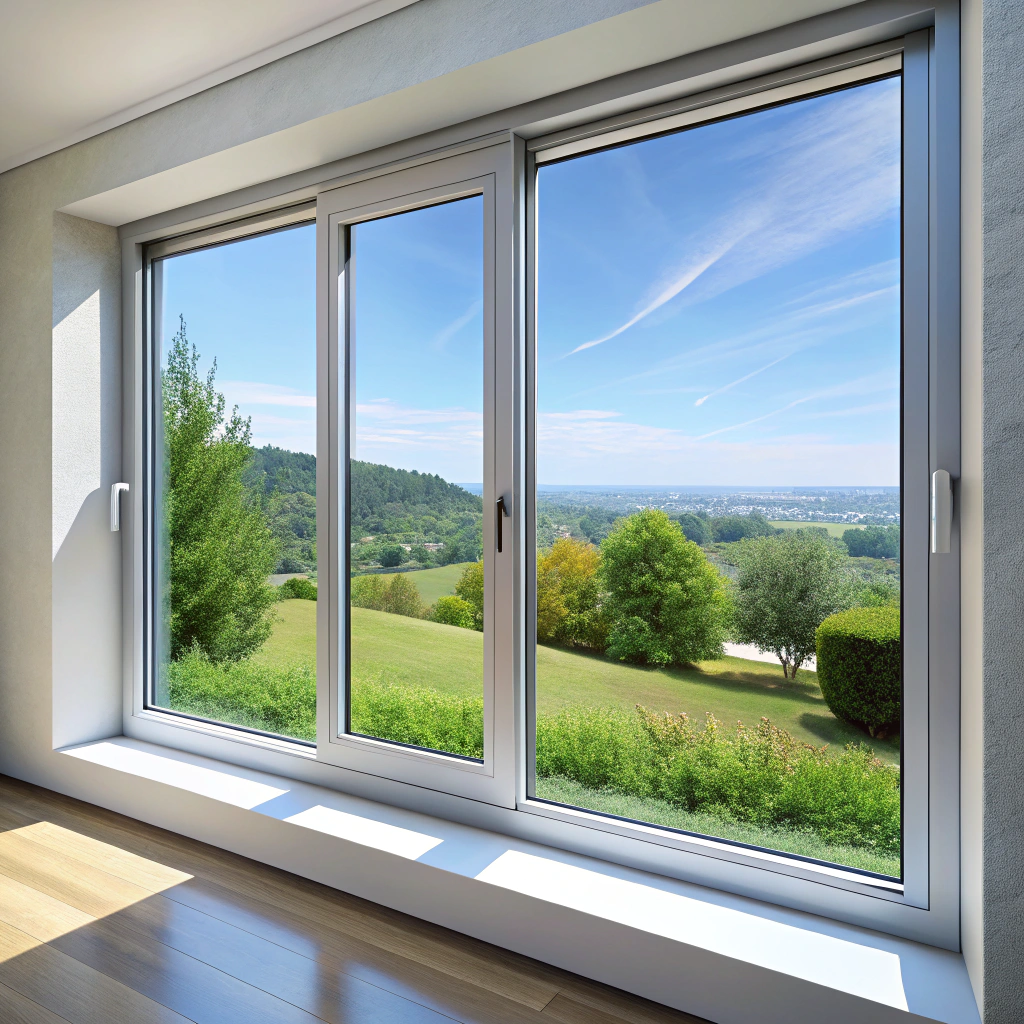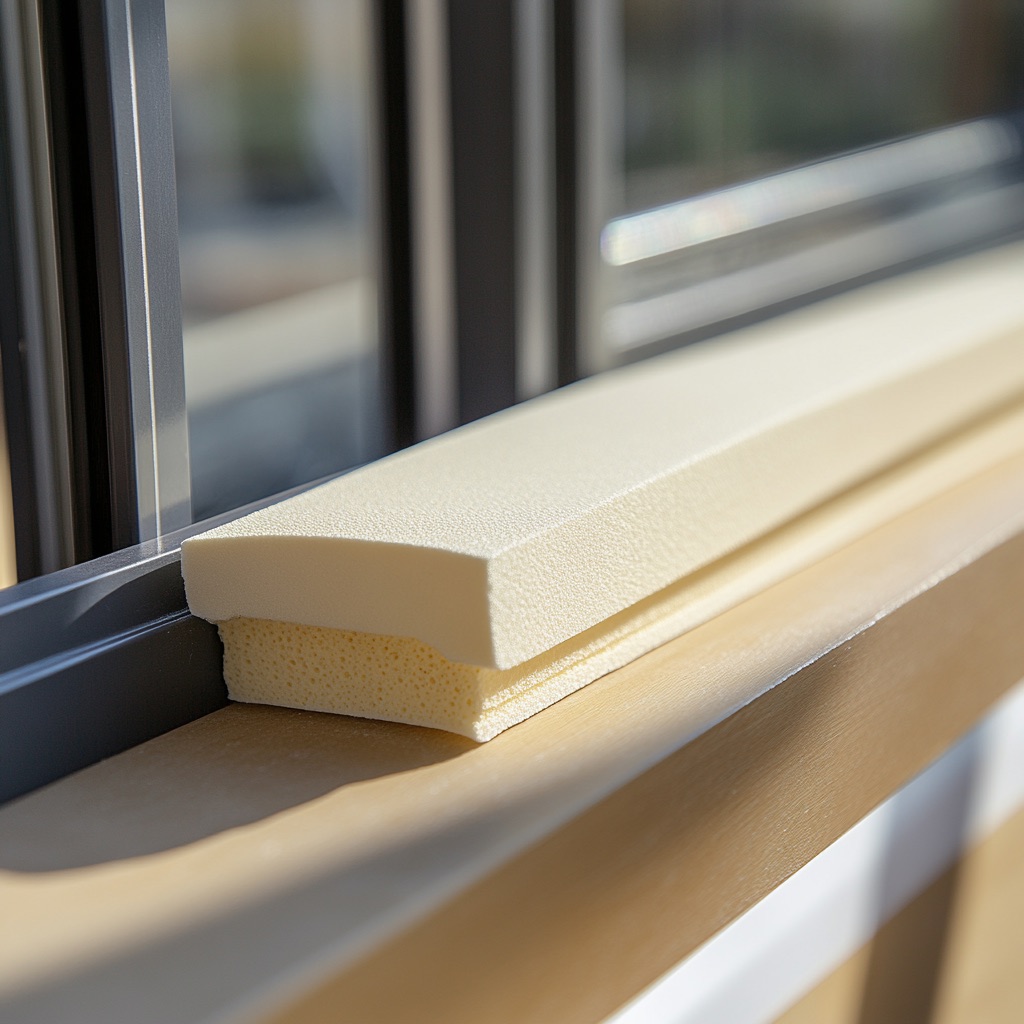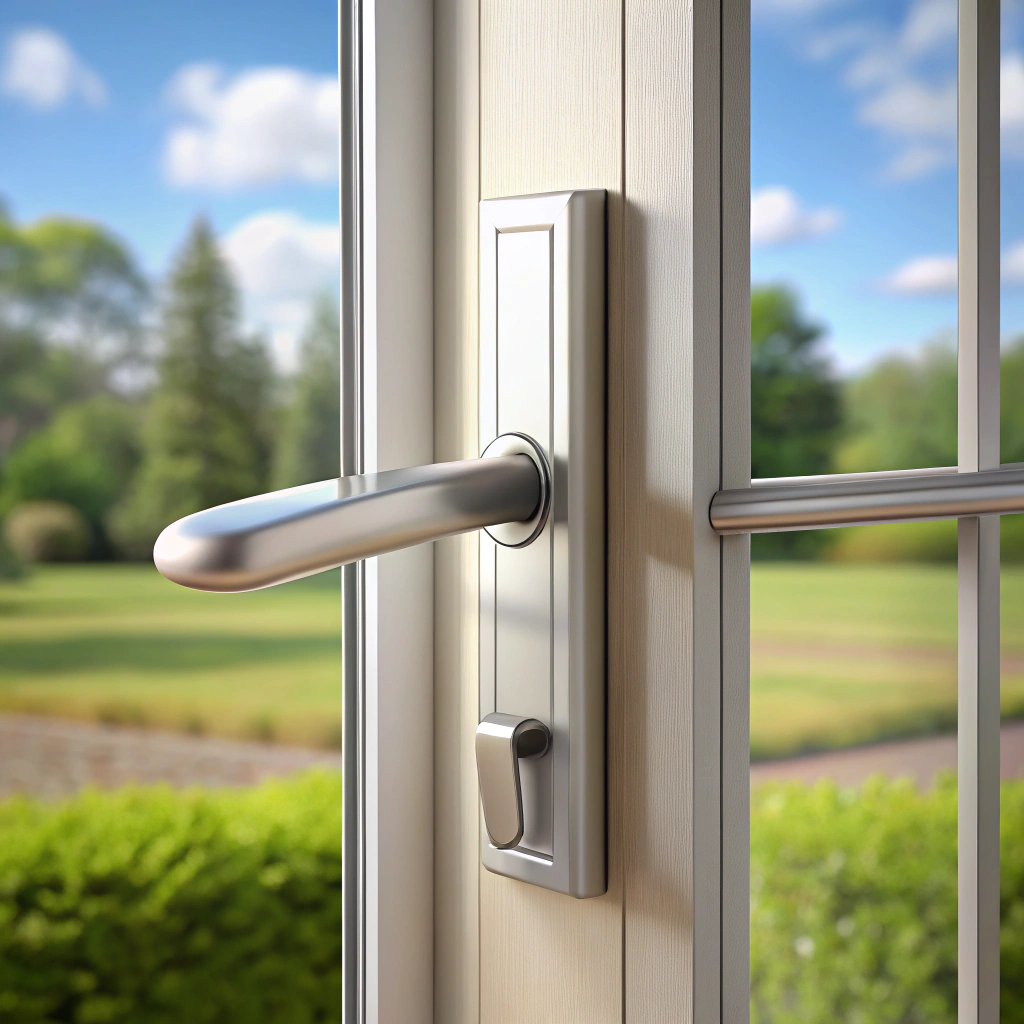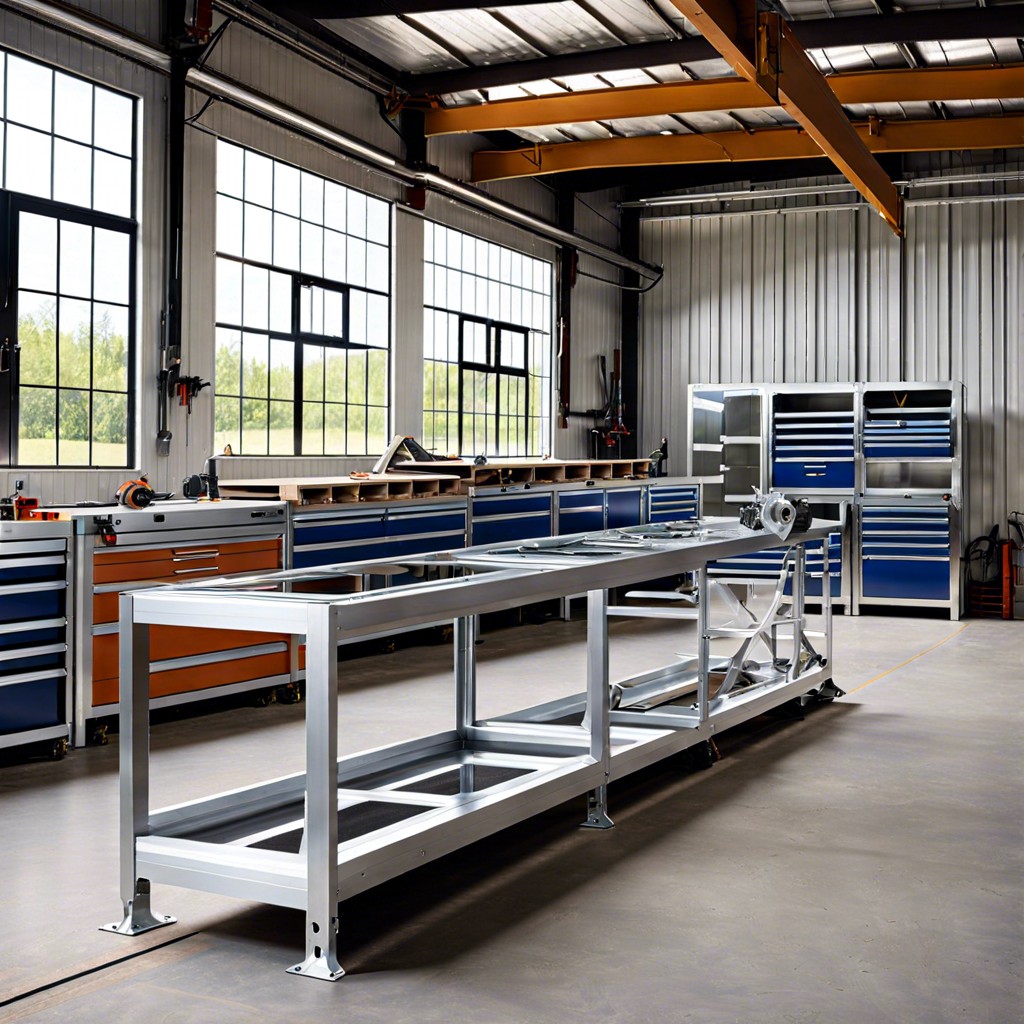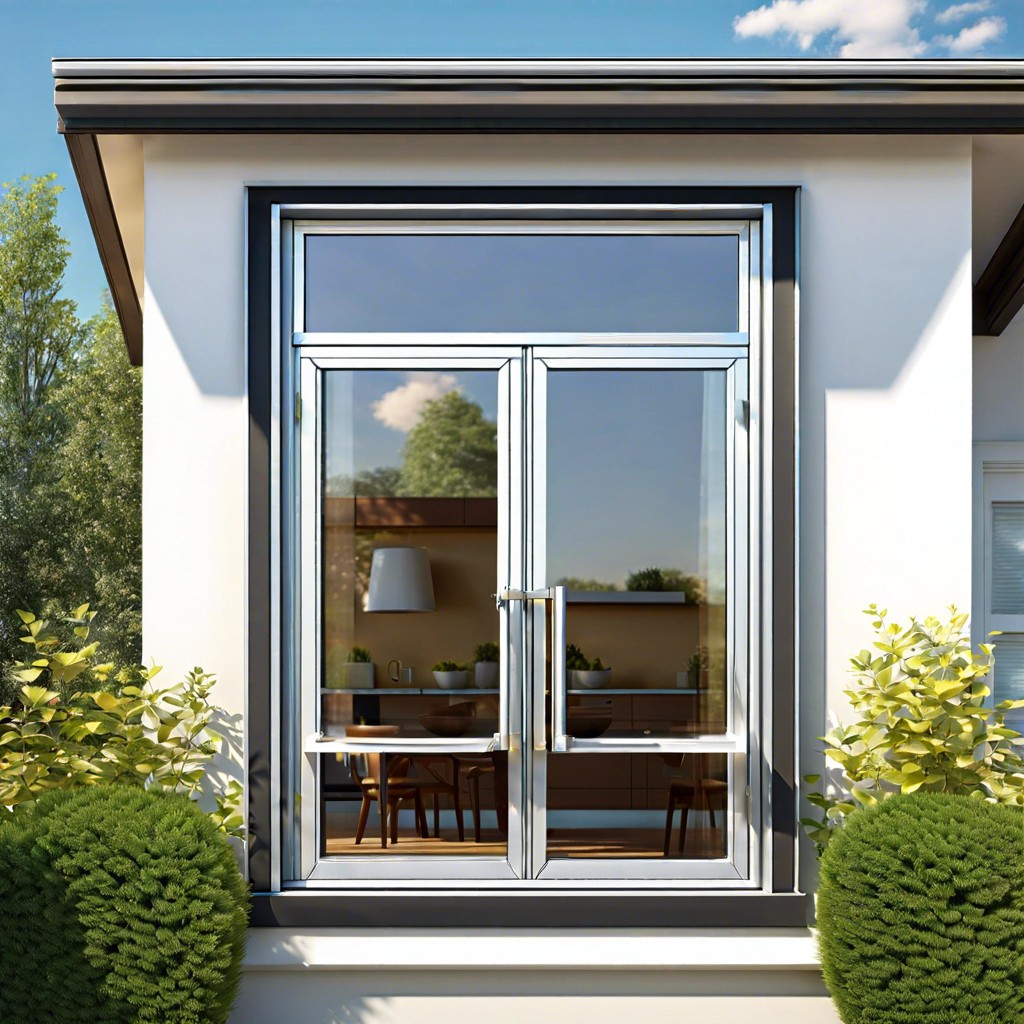Discover the benefits and construction of broken bridge aluminum windows and their role in enhancing thermal efficiency in modern homes.
Key takeaways:
- Insulating Layer: Thermal break lowers temperature conduction.
- Enhanced Comfort: Maintains interior comfort and temperature.
- Energy Savings: Reduces energy required for heating and cooling.
- Eco-Friendliness: Lowers carbon footprint and energy consumption.
- Sound Insulation: Dampens external noise for a quieter environment.
What Is the Broken Bridge Aluminum Window

A broken bridge aluminum window incorporates a thermal break – a material piece separating the frame into interior and exterior parts to improve insulation and energy efficiency. This construction effectively interrupts the thermal path, thwarting heat transfer and reducing condensation risks.
Key Points:
- Insulating Layer: The thermal break usually consists of a reinforced polyamide bar or similarly insulating material, reducing temperature conduction.
- Enhanced Comfort: By diminishing thermal conductivity, these windows maintain interior comfort, keeping cold out during winter and heat during summer.
- Energy Savings: The improved insulation translates to less energy required for heating and cooling, cutting down utility bills.
- Eco-Friendliness: Reduced energy consumption not only saves money but also benefits the environment by lowering the carbon footprint associated with heating and cooling.
- Sound Insulation: Besides thermal isolation, the broken bridge design also aids in dampening external noise, contributing to a quieter indoor environment.
By directly addressing thermal bridge issues, this innovative window design represents a smart choice for both new constructions and renovations aimed at energy efficiency and improved living conditions.
Broken Bridge Aluminum Window Classification
Several types of broken bridge aluminum windows cater to different needs and preferences. Sliding windows offer ease of use and are common in compact spaces. Casement windows hinge on the side, maximizing ventilation and allowing for a wide opening. Tilt and turn windows provide versatile opening options, tilting for ventilation, or swinging open like a door. Bi-fold windows are ideal for those seeking an expansive view, as they fold away to open up an entire wall. Lastly, fixed windows, which do not open, are perfect for locations where insulation and light are priorities over ventilation.
Each type utilizes thermal break technology to enhance energy efficiency and comfort.
The Advantages of Broken Bridge Aluminum Windows
Broken bridge aluminum windows offer significant benefits that cater to both energy efficiency and comfort. They are designed with a thermal break, a barrier between the inside and outside window frames, reducing heat transfer. This design ensures that interiors stay warmer during the winters and cooler during the summers, leading to lower energy consumption and utility costs.
In addition to thermal insulation, these windows provide excellent acoustic insulation, a boon for homes in noisy environments. The structure dampens external sounds, making indoor spaces quieter and more peaceful.
Durability is another key advantage. Aluminum, as a material, is resistant to corrosion, does not warp or crack, and requires little maintenance, making these windows long-lasting.
Furthermore, the windows come in various finishes and colors, offering aesthetic flexibility to match any architectural style. They also feature high-level security with their robust construction and can be fitted with multiple locking points.
Lastly, broken bridge aluminum windows are environmentally friendly. The aluminum frames are typically made from recycled materials and are fully recyclable at the end of their lifespan, contributing to a sustainable building practice.
Features and Materials
Constructed with a multi-chambered aluminum profile, these windows include a ‘thermal break’ — a plastic insulating strip — sandwiched between the inside and outside aluminum sections to hinder thermal conductivity. This innovation significantly reduces heat loss, promotes energy efficiency, and lends itself to climatic adaptability, making it suitable for various regions.
The aluminum used is typically reinforced with alloys for added strength and durability, ensuring a longer lifespan and resistance to the elements. High-grade EPDM rubber seals complement the design to enhance waterproofing and sound insulation.
Coating options for the material range from powder coating to anodizing, providing resistance to corrosion, UV radiation, and abrasion, while allowing for customization in color and finish to match various architectural aesthetics. Advanced glazing options support the functionality by allowing for double or triple-pane glass, often filled with inert gases and equipped with Low-E coatings to further the window’s thermal efficiency.
Choosing the Right Supplier
When selecting a supplier for broken bridge aluminum windows, prioritize those that showcase transparency in their manufacturing processes and material sourcing. Investigate their track record for quality control and adherence to industry standards, ensuring their products offer the required thermal insulation, soundproofing, and durability.
A credible supplier often issues extended warranties and robust after-sales support, indicating confidence in their windows’ longevity and performance. Assess their customization options, as reputable firms accommodate specific architectural needs or aesthetic preferences. Confirm the supplier’s commitment to sustainability, an aspect increasingly critical in construction materials.
Lastly, review customer testimonials and industry certifications, which serve as indicators of reliability, expertise, and customer satisfaction.
Recap
